Table of Contents
Tired of weeknight dinner dilemmas? Do you dream of healthy, home-cooked meals without the daily stress? Then it's time to explore how to meal prep better. Meal prepping isn't just about Tupperware and chicken breasts; it's a powerful tool for saving time, eating healthier, and reducing food waste. This guide will walk you through the essential strategies to transform your approach to meal prep, whether you're a complete beginner or looking to level up your existing routine. We'll cover everything from mastering the basics and time-saving techniques to smart shopping and storage solutions that keep your ingredients fresh. Get ready to discover creative meal prep ideas that banish boring meals and learn how to troubleshoot common pitfalls. By the end of this article, you'll have the knowledge and confidence to meal prep like a pro, making healthy eating a seamless and enjoyable part of your life. Let's dive in and unlock the secrets to efficient and delicious meal prepping!
Mastering the Basics: Essential Strategies for Meal Prep Beginners
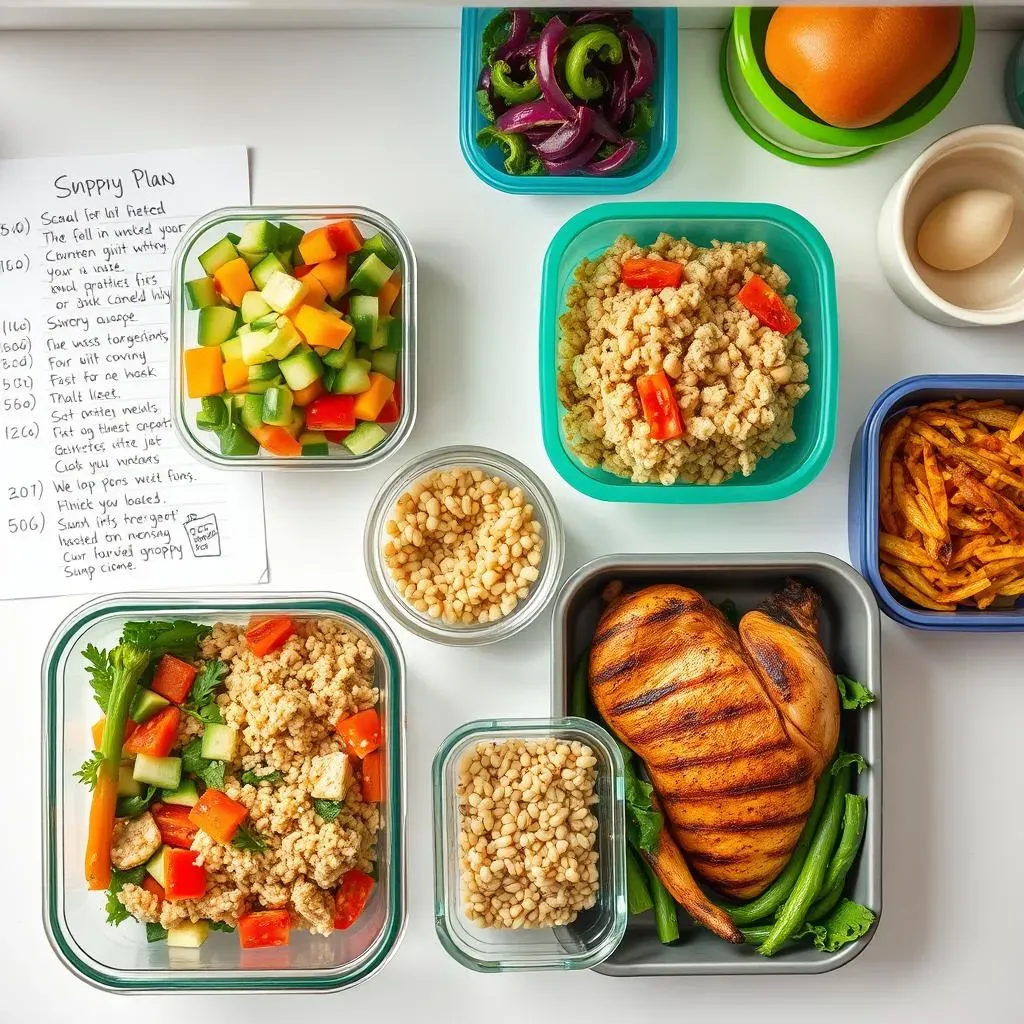
Mastering the Basics: Essential Strategies for Meal Prep Beginners
#1: Start Small and Simple
Feeling overwhelmed? Don't jump into prepping every single meal for the entire week right away. That's a recipe for burnout! Instead, start small. Pick one or two meals to focus on, like lunches or breakfasts. Choose simple recipes with few ingredients. Think overnight oats, salads with pre-cooked chicken, or simple pasta dishes. The goal is to build confidence and get a feel for the process without feeling stressed. Once you've nailed a few simple meals, you can gradually expand your repertoire.
Consider starting with just prepping components, not full meals. For example, roast a big batch of vegetables on Sunday that you can then add to salads, grain bowls, or omelets throughout the week. Or cook a large batch of quinoa or rice to use as a base for various dishes. This approach is less daunting and provides flexibility.
#2: Plan Your Meals & Make a List
This is the most crucial step! Don't just wander into the grocery store hoping for inspiration. Take some time to plan out your meals for the week. Consider your schedule, dietary needs, and favorite flavors. Write down exactly what you'll be eating for each meal you're prepping. Then, create a detailed shopping list based on your meal plan. This will prevent impulse buys and ensure you have everything you need. Check your pantry and fridge before you shop to avoid buying duplicates.
I find it helpful to create a weekly meal plan template that I can reuse. I list each day of the week and then plan out breakfast, lunch, and dinner. Underneath each meal, I list the ingredients I'll need. This makes creating my shopping list a breeze. Don't be afraid to repeat meals throughout the week. It's okay to eat the same lunch for three days in a row if it makes your life easier!
#3: Invest in the Right Containers
Having the right containers can make a huge difference in your meal prepping success. Invest in a variety of airtight containers in different sizes. Glass containers are great for reheating and are easy to clean, but they can be heavier and more expensive. Plastic containers are lightweight and affordable, but be sure to choose BPA-free options. Consider the shape of your containers as well. Rectangular or square containers are more space-efficient than round ones.
Also, think about investing in some insulated lunch bags or containers if you'll be taking your meals on the go. This will help keep your food at the proper temperature and prevent spoilage. Labeling your containers with the date and contents is also a good idea, especially if you're prepping several meals at once.
Container Type | Pros | Cons | Best For |
|---|---|---|---|
Glass | Easy to clean, reheat-safe, durable | Heavy, more expensive | Reheating meals, storing leftovers |
Plastic (BPA-free) | Lightweight, affordable | Can stain, not always reheat-safe | Dry snacks, salads |
Reusable Bags | Eco-friendly, space-saving | Not suitable for liquids | Sandwiches, fruit |
TimeSaving Techniques: How to Meal Prep Better and Faster
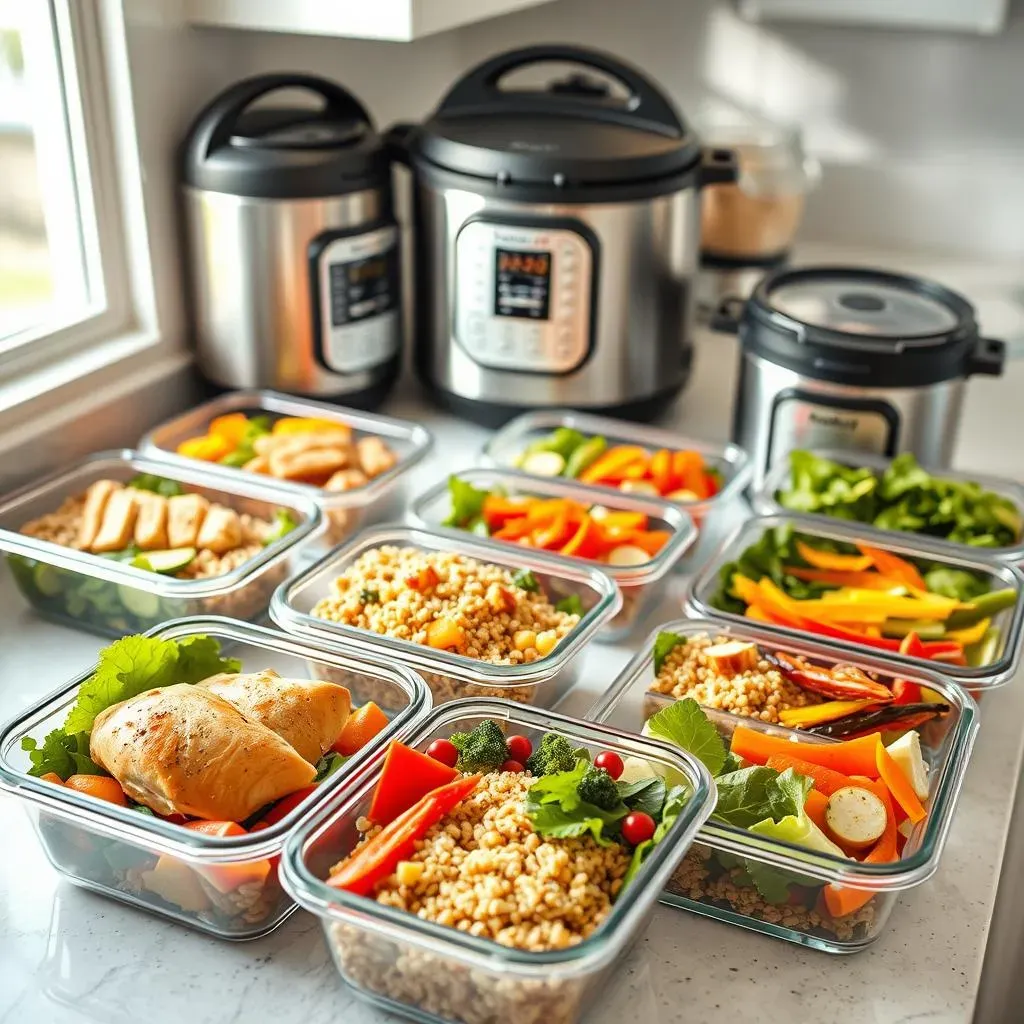
TimeSaving Techniques: How to Meal Prep Better and Faster
#1: Batch Cooking is Your Best Friend
Seriously, embrace batch cooking! It's the ultimate time-saver. Instead of cooking one chicken breast, cook a whole package. Roast a huge tray of veggies instead of a handful. Double or triple your recipes and freeze the extra portions for future meals. Think of it as investing time upfront for a big payoff later. Batch cooking also reduces cleanup since you're only making a mess once.
I like to dedicate a few hours on the weekend to batch cooking. I'll put on some music or a podcast and just get to work. I usually focus on cooking proteins, grains, and vegetables. Then, during the week, I can mix and match these components to create different meals. For example, I might use the same roasted chicken in a salad one day, in a taco the next, and in a soup the day after that.
#2: Utilize Your Appliances Wisely
Your kitchen appliances are your allies! The slow cooker is perfect for hands-off cooking. Throw in some chicken, beans, or vegetables in the morning, and come home to a ready-to-eat meal. The Instant Pot is great for quickly cooking grains, beans, and soups. The air fryer is perfect for crispy vegetables and proteins without all the oil. Don't let these appliances gather dust; put them to work!
I'm a huge fan of using my slow cooker for meal prepping. I can throw in a bunch of ingredients in the morning and forget about it until dinner time. It's especially great for making soups, stews, and chili. I also love using my Instant Pot to cook quinoa and rice. It's so much faster than cooking them on the stovetop. And my air fryer is my go-to for roasting vegetables. They come out perfectly crispy every time!
Smart Shopping & Storage: Maximizing Freshness for Your Meal Prep
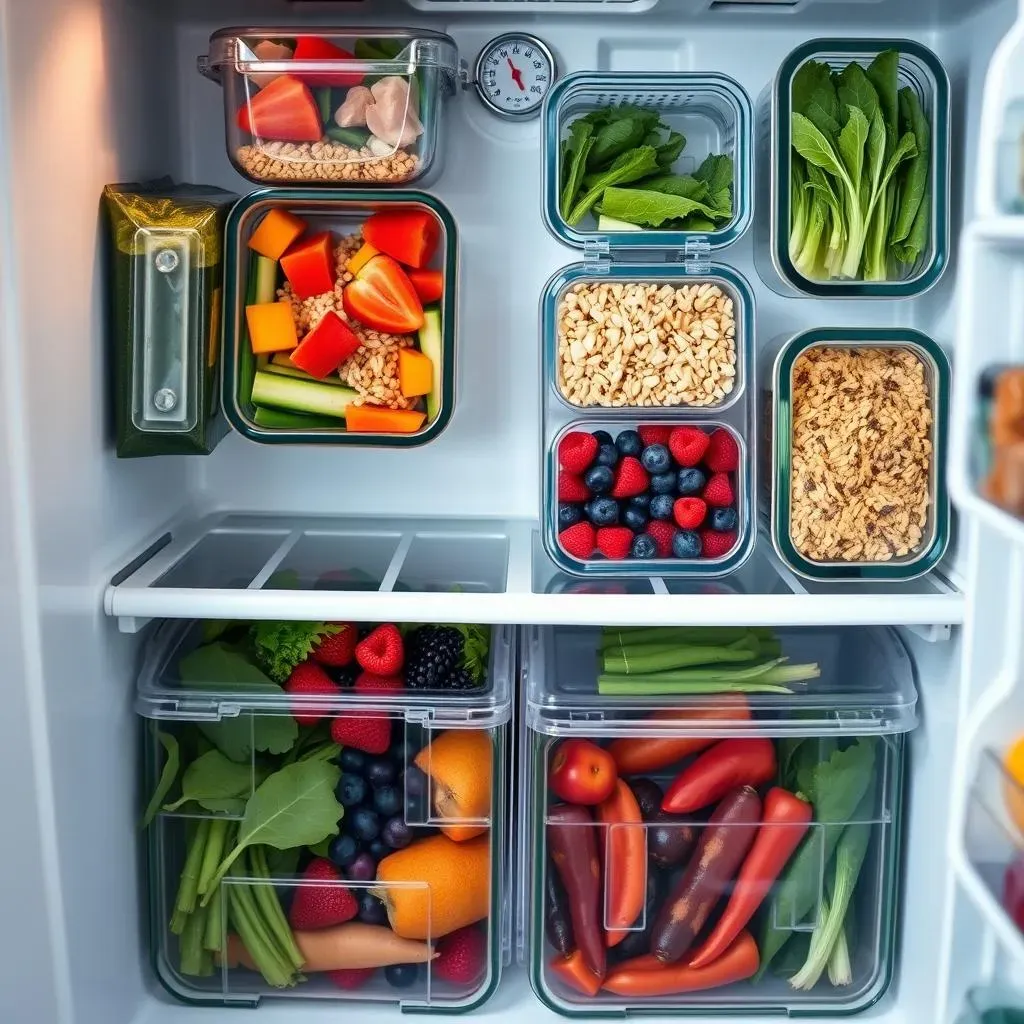
Smart Shopping & Storage: Maximizing Freshness for Your Meal Prep
#1: Shop Smart: Prioritize Freshness and In-Season Produce
The foundation of any successful meal prep is starting with the freshest ingredients possible. When grocery shopping, prioritize buying in-season produce. Not only will it taste better, but it's also typically more affordable and packed with nutrients. Check expiration dates on all products, and don't be afraid to ask the produce manager when items were stocked. Consider visiting farmers' markets for locally sourced, ultra-fresh options. Plan your meals around what's available and at its peak, ensuring maximum flavor and nutritional value. Avoid buying pre-cut fruits and vegetables, as they tend to spoil faster.
Think about the lifespan of different produce items. Berries are notoriously delicate, while root vegetables like carrots and potatoes can last for weeks. Plan to use the more perishable items earlier in the week and save the hardier ones for later. Also, be mindful of how you store different fruits and vegetables. Some, like tomatoes and avocados, ripen best at room temperature, while others, like leafy greens, need to be refrigerated.
#2: Master the Art of Proper Food Storage
Proper food storage is crucial for extending the shelf life of your prepped meals and ingredients. Invest in airtight containers to prevent spoilage and keep food fresh. Store fruits and vegetables in the crisper drawers of your refrigerator, and be sure to separate ethylene-producing fruits (like apples and bananas) from other produce to prevent premature ripening. Wrap leafy greens in paper towels to absorb excess moisture and keep them crisp. Store cooked grains and proteins in separate containers to prevent cross-contamination and maintain their individual textures. Don't overcrowd your refrigerator, as this can restrict airflow and lead to uneven cooling.
Consider using vacuum sealers for longer-term storage. Vacuum sealing removes air from the packaging, which helps to prevent freezer burn and extends the shelf life of food. This is especially useful for freezing prepped meals or individual portions. Also, be sure to label all containers with the date and contents. This will help you keep track of what you have and prevent food waste. A simple label maker can be a game-changer for organization.
#3: Know Your Fridge: Temperature Zones and Best Practices
Did you know that your refrigerator has different temperature zones? Understanding these zones can help you store food more effectively. The top shelves are generally warmer than the bottom shelves, so store items that don't need to be as cold, like leftovers and drinks, on the top. The bottom shelves are the coldest, making them ideal for storing raw meat, poultry, and fish. The door shelves are the warmest part of the refrigerator, so avoid storing highly perishable items there. Use the crisper drawers for fruits and vegetables, and adjust the humidity settings accordingly. High humidity is best for leafy greens, while low humidity is better for fruits.
Regularly clean your refrigerator to prevent the growth of bacteria and mold. Wipe up spills immediately and discard any expired or spoiled food. A clean refrigerator not only keeps your food fresher but also helps to prevent unpleasant odors. Also, be mindful of the temperature of your refrigerator. The ideal temperature is between 35°F and 40°F (1.7°C and 4.4°C). Use a refrigerator thermometer to monitor the temperature and adjust the settings as needed.
Fridge Zone | Temperature | Best For |
|---|---|---|
Top Shelves | Warmer | Leftovers, Drinks, Cooked Foods |
Bottom Shelves | Coldest | Raw Meat, Poultry, Fish |
Door Shelves | Warmest | Condiments, Jams, Shelf-Stable Items |
Crisper Drawers | Variable Humidity | Fruits & Vegetables |
Creative Meal Prep Ideas: Breaking Free from Boring Recipes
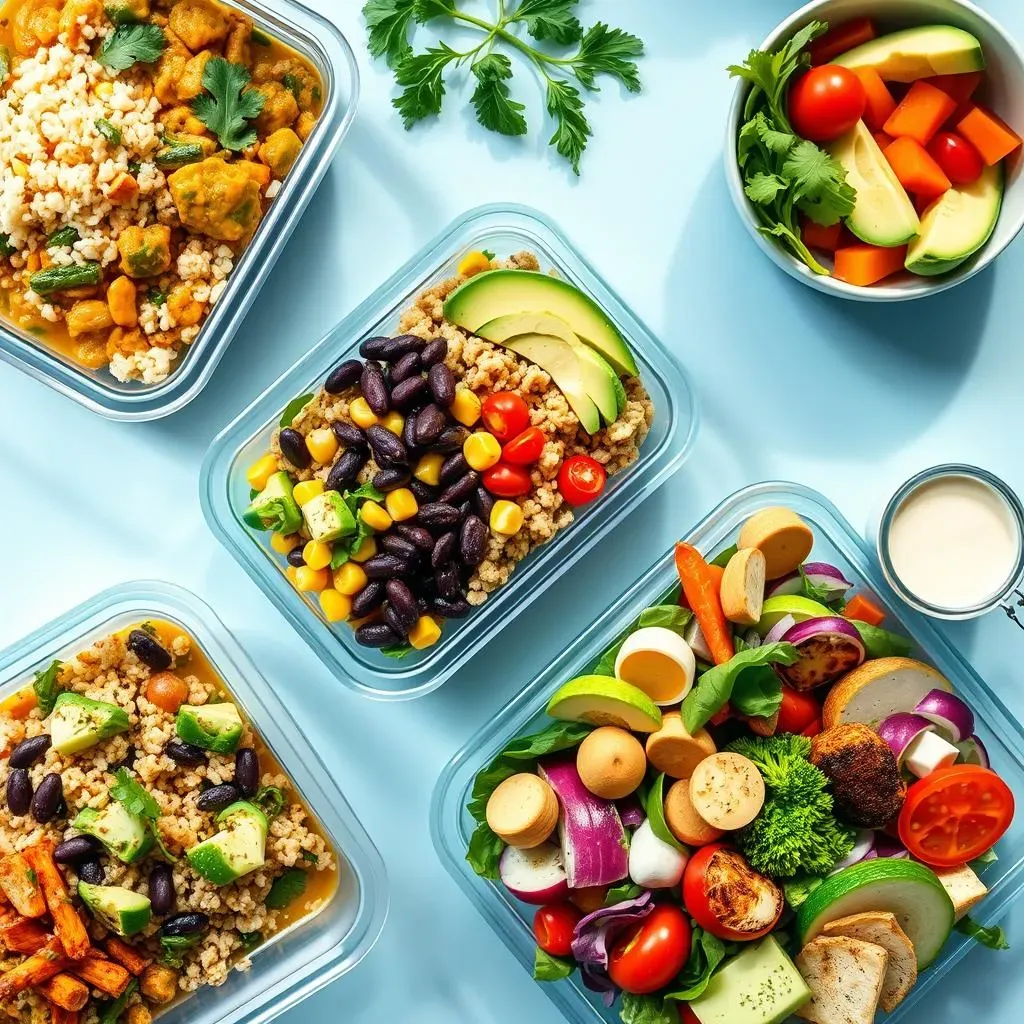
Creative Meal Prep Ideas: Breaking Free from Boring Recipes
#1: Embrace Global Flavors: Spice Up Your Meal Prep
Let's face it, eating the same bland meals day after day is a surefire way to kill your motivation. The solution? Explore the world through your taste buds! Incorporate global flavors into your meal prep to add excitement and variety. Think vibrant Thai curries, flavorful Mexican bowls, aromatic Indian dals, or zesty Mediterranean salads. Experiment with different spices, herbs, and sauces to create unique and delicious meals. Don't be afraid to try new recipes and cuisines. The possibilities are endless!
I love making a big batch of Thai green curry with chicken and vegetables on Sunday. Then, I portion it out into containers and serve it with rice or quinoa for lunch during the week. It's packed with flavor and nutrients, and it's a welcome change from the usual boring salads. Another favorite is Mexican-inspired quinoa bowls with black beans, corn, salsa, avocado, and a dollop of Greek yogurt. The key is to use high-quality spices and fresh ingredients to create authentic flavors.
#2: Repurpose Leftovers: Transform Yesterday's Dinner into Today's Lunch
Don't let leftovers go to waste! Get creative and repurpose them into new and exciting meals. Roasted chicken can become chicken salad sandwiches, shredded chicken tacos, or chicken noodle soup. Leftover steak can be sliced and added to salads, stir-fries, or quesadillas. Cooked vegetables can be blended into soups, added to omelets, or used as a filling for wraps. The key is to think outside the box and find new ways to use what you already have. This not only saves time and money but also reduces food waste.
One of my favorite ways to repurpose leftovers is to turn them into frittatas. I'll whisk together some eggs, add in leftover vegetables, cheese, and protein, and bake it in the oven until it's set. It's a quick and easy way to create a healthy and satisfying meal. I also love using leftover rice to make fried rice. I'll add in some vegetables, protein, and soy sauce, and it's ready in minutes. Get creative and experiment with different flavor combinations to find what you like best.
Leftover | Creative Repurpose |
|---|---|
Roasted Chicken | Chicken Salad Sandwiches, Chicken Tacos, Chicken Noodle Soup |
Cooked Steak | Steak Salads, Steak Stir-Fries, Steak Quesadillas |
Roasted Vegetables | Vegetable Soups, Vegetable Omelets, Vegetable Wraps |
Cooked Rice | Fried Rice, Rice Bowls, Rice Pudding |
#3: Build-Your-Own Meal Stations: Empower Yourself with Options
Instead of prepping complete meals, consider creating "build-your-own" meal stations. This gives you more flexibility and allows you to customize your meals to your liking. Prep a variety of proteins, grains, vegetables, sauces, and toppings, and then let everyone create their own meals. This is a great option for families with different dietary needs or preferences. It also helps to prevent meal prep fatigue, as you're not stuck eating the same thing every day.
I like to create a "salad bar" in my refrigerator with a variety of prepped ingredients, such as lettuce, spinach, chopped vegetables, grilled chicken, hard-boiled eggs, cheese, nuts, seeds, and dressings. Then, I can easily assemble a healthy and satisfying salad in minutes. I also like to create a "taco bar" with cooked ground beef or chicken, shredded cheese, salsa, sour cream, guacamole, and tortillas. This makes it easy to whip up a quick and delicious taco dinner. The key is to provide a variety of options and let everyone customize their meals to their liking.
Troubleshooting Your Meal Prep: Common Pitfalls and How to Avoid Them
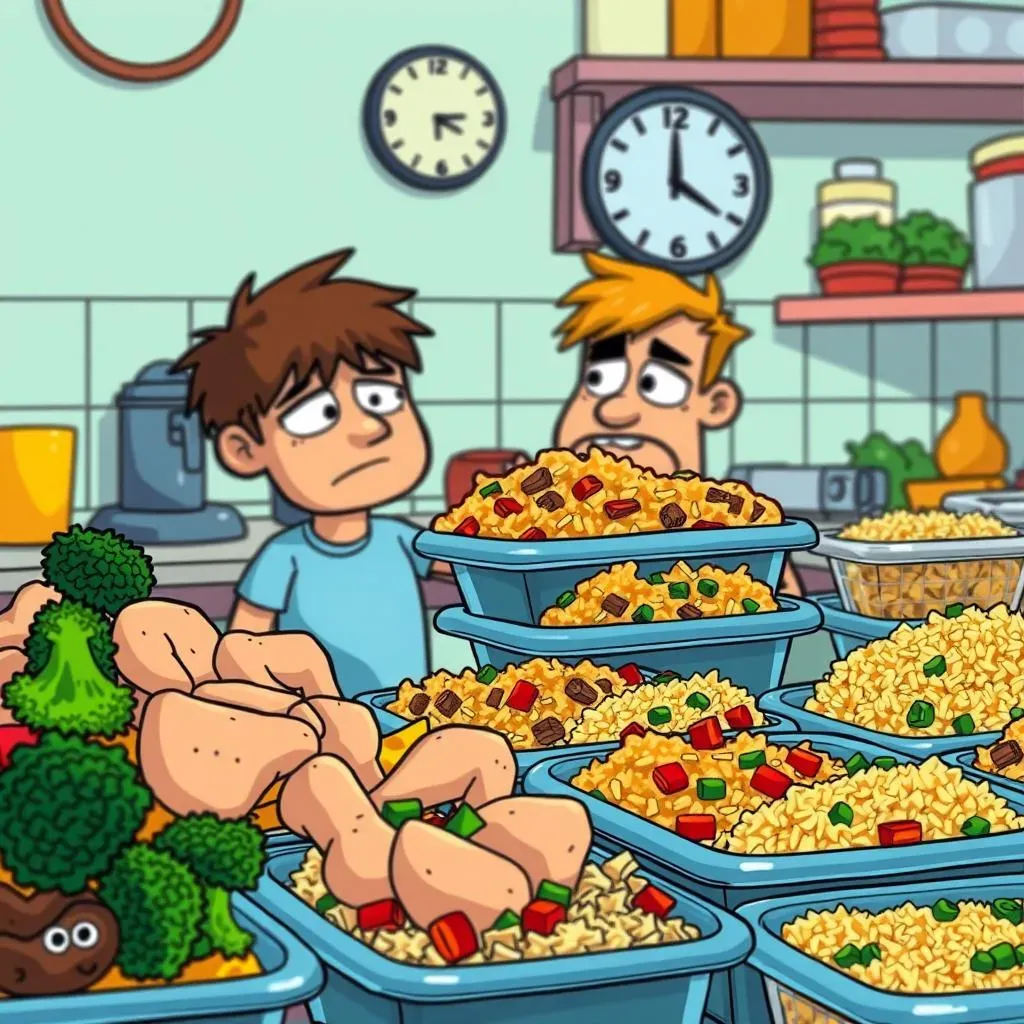
Troubleshooting Your Meal Prep: Common Pitfalls and How to Avoid Them
#1: Avoiding the Mid-Week Meal Prep Slump
Let's be real, even with the best intentions, that initial meal prep enthusiasm can wane by Wednesday. Suddenly, that meticulously planned chicken and broccoli looks less appealing than ordering takeout. So, how do you combat the dreaded meal prep slump? First, acknowledge that it's normal! Don't beat yourself up about it. Second, build in some flexibility. Don't feel like you have to stick to your meal plan religiously. If you're craving something different, allow yourself a healthy alternative. Maybe keep a few frozen meals on hand for emergencies or plan one "free" meal per week. The key is to find a balance between structure and spontaneity.
Another strategy is to prep components rather than complete meals. This gives you more flexibility to mix and match ingredients based on your cravings. For example, if you have cooked chicken, rice, and roasted vegetables on hand, you can easily create a variety of meals, such as a chicken and rice bowl, a chicken salad sandwich, or a vegetable stir-fry. Also, make sure your meals are actually enjoyable! Don't force yourself to eat bland or unappetizing food. Experiment with different flavors and recipes until you find a meal prep routine that you actually look forward to.
#2: Dealing with Food Spoilage & Maintaining Freshness
There's nothing worse than opening a container of prepped food only to find that it's gone bad. Food spoilage is a common meal prep pitfall, but it's also easily preventable. The key is to practice proper food storage and handling techniques. Make sure to cool cooked food completely before storing it in the refrigerator. This will prevent condensation from forming, which can promote bacterial growth. Store food in airtight containers to prevent it from drying out or absorbing odors from other foods in the refrigerator. Label all containers with the date and contents so you can keep track of what you have and use the oldest items first. And most importantly, don't be afraid to throw away food that looks or smells suspicious. It's better to be safe than sorry.
Consider investing in some reusable food storage bags or containers with built-in freshness vents. These can help to extend the shelf life of your prepped meals. Also, be mindful of the temperature of your refrigerator. The ideal temperature is between 35°F and 40°F (1.7°C and 4.4°C). Use a refrigerator thermometer to monitor the temperature and adjust the settings as needed. And finally, don't prep more food than you can realistically eat within a few days. It's better to prep smaller batches more frequently than to prep a huge amount of food that will end up going to waste.
Problem | Solution |
|---|---|
Food Spoiling Quickly | Cool food completely before storing, use airtight containers, label containers with date and contents. |
Meals Becoming Boring | Incorporate variety, try new recipes, repurpose leftovers, create build-your-own meal stations. |
Losing Motivation | Start small, build in flexibility, prep components rather than complete meals, make sure your meals are enjoyable. |
#3: Overcoming Time Constraints: Streamlining the Process
Time is a precious commodity, and it's easy to feel like you don't have enough of it for meal prepping. But the truth is, meal prepping doesn't have to be a time-consuming chore. There are plenty of ways to streamline the process and make it more efficient. First, focus on prepping the most time-consuming components of your meals. For example, if you're making salads, prep the vegetables and proteins ahead of time and then assemble the salads just before eating. Second, utilize your kitchen appliances wisely. The slow cooker, Instant Pot, and air fryer can all save you time and effort. Third, don't be afraid to ask for help. Enlist your family members to assist with chopping vegetables or washing dishes.
Consider breaking up your meal prep into smaller chunks of time. Instead of spending several hours meal prepping on the weekend, try prepping for 30 minutes each evening after dinner. This can make the process feel less daunting and more manageable. Also, be realistic about your time constraints. Don't try to prep too many meals at once. It's better to prep a few meals well than to prep a lot of meals poorly. And finally, remember that meal prepping is an investment in your health and well-being. It's worth taking the time to do it right.
Conclusion: Your Path to Meal Prep Success
Mastering the art of meal prep is a journey, not a destination. By implementing the strategies and tips outlined in this guide, you're well on your way to saving time, eating healthier, and enjoying delicious, stress-free meals throughout the week. Remember to start small, experiment with different recipes and techniques, and most importantly, find a system that works for you. Don't be afraid to adjust your approach as your needs and preferences evolve. With a little planning and practice, you'll discover that meal prep is not a chore, but a powerful tool for achieving your health and wellness goals. So, embrace the process, get creative in the kitchen, and savor the rewards of your newfound meal prep mastery.